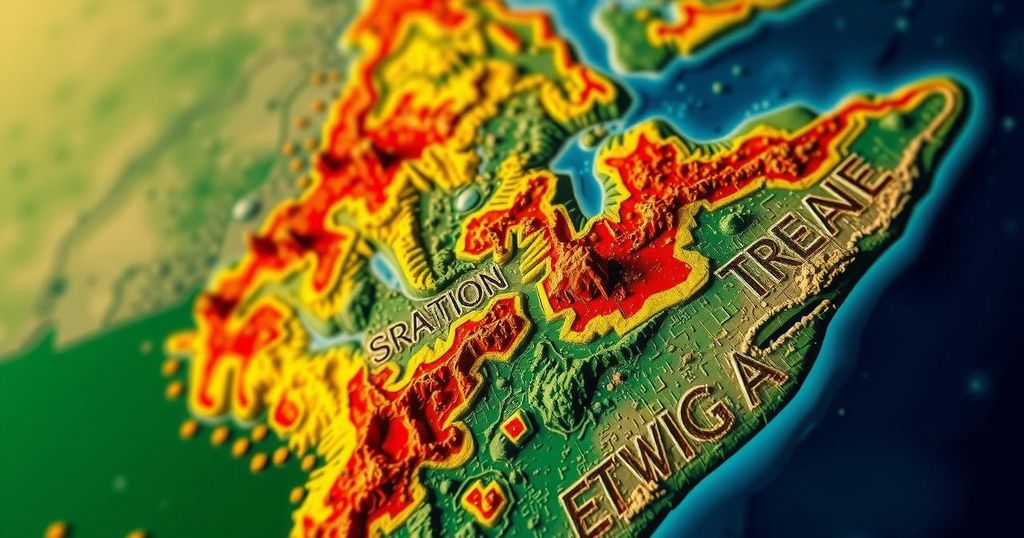The Awash region experienced its second earthquake of the day, a 4.6 magnitude tremor felt in Addis Ababa, raising concerns over recent seismic activity. The Awash Fentale area has witnessed five earthquakes in recent days, prompting caution from authorities. While experts confirm that such low-magnitude quakes generally pose no significant threat, they emphasize the importance of public preparedness and ongoing geological monitoring.
On the evening of October 23, 2024, the Awash region experienced its second earthquake of the day, which registered a magnitude of 4.6 according to the U.S. Geological Survey. This tremor occurred at 6:20 p.m. and was noticeably felt in Addis Ababa, prompting concerns regarding the recent uptick in seismic activity in the area. The Awash Fentale district has already recorded five earthquakes within a few days, alarming residents and leading various government agencies to issue precautionary statements. Authorities have urged citizens to remain vigilant and adhere to safety protocols established by the Ethiopian government, particularly because these tremors are impacting even those in the capital city. In a statement from the Geophysics, Space Science, and Astronomy Institute at Addis Ababa University, it was confirmed that a series of earthquakes of varying magnitudes had occurred in the Awash Fentale district. Professor Atalay Ayele, the head of the Sociology Department at the university, provided further clarification, noting that the largest quake of the day, with a magnitude of 4.6, was recorded at 6:13 p.m. He indicated that while tremors were felt in different areas of Addis Ababa, the relatively low magnitudes of these quakes indicated that they currently pose no significant threat to residents. Professor Ayele highlighted the geological context of the Awash Fentale region, located near the East African Rift, where tectonic plates are in the process of diverging. This geological setting renders the area particularly prone to frequent, though typically low-magnitude, earthquakes that may not be threatening but often cause unease among residents unfamiliar with seismic phenomena. He emphasized the importance of continued monitoring to assess any potential increases in the frequency or severity of seismic events. Additionally, Gebretsadiq, the head of the Geology Department at Samara University, elucidated the nature of these earthquakes, stating during an interview with Fana Broadcasting Corporation (FBC) that recent seismic activity is likely linked to the movement of magma beneath the Earth’s surface. As magma ascends, it exerts pressure on neighboring rock formations, leading to fractures and resulting seismic events. Gebretsadiq mentioned that the area’s geological features, particularly its volcanic history, heighten the likelihood of such occurrences. Despite the recent surge in earthquakes, Gebretsadiq acknowledged the challenges in predicting their duration and recurrence due to the intricate geological interactions involved. He underscored the necessity for public awareness initiatives to educate residents on earthquake preparedness and safety protocols, as well as for research to enhance the understanding of regional seismic patterns, thereby enabling more effective precautions. To ensure public safety, the Ethiopian government, alongside local geological institutions, is actively monitoring the situation and disseminating crucial information and guidelines. Residents are encouraged to familiarize themselves with emergency responses and exercise caution, recognizing that even minor earthquakes can occasionally cause structural damage or, in rare instances, contribute to more significant seismic events. In summary, experts recommend that residents in Addis Ababa and surrounding areas remain prepared for future earthquakes, regardless of their magnitude. Simple safety measures, such as securing heavy furniture, identifying safe locations for protection during a quake, and assembling basic emergency kits, can significantly enhance resilience against seismic incidents. The recent earthquakes in the Awash Fentale region have once again highlighted the susceptibility of the area to tectonic activity. Continued studies on the region’s fault lines and volcanic structures are ongoing in an effort to better understand the implications for communities residing in ecologically active zones. While no imminent threat is currently apparent, the frequency of these tremors serves as an important reminder of the necessity for preparedness and informed responses among the populace.
The Awash region in Ethiopia, notably the Awash Fentale area, is geologically active, situated near the East African Rift. This tectonic zone is characterized by frequent, albeit typically low-magnitude, earthquakes resulting from the diverging plates. The recent series of earthquakes, with a noteworthy tremor reaching a magnitude of 4.6, has raised concerns among residents, compelling authorities to issue cautionary advisories. Awareness of earthquake preparedness is critical given the likelihood of additional seismic activity in this tectonically fragile region.
The series of recent earthquakes in the Awash region underscores the area’s vulnerability to tectonic activity. Government and geological agencies are taking proactive measures to monitor this phenomenon and educate residents on safety protocols. While the immediate threat level remains low, public vigilance and preparedness are paramount for residents in anticipating potential future seismic events. The collaboration of geologists and increased awareness campaigns will be essential in enhancing community resilience to seismic risks.
Original Source: addisinsight.net






